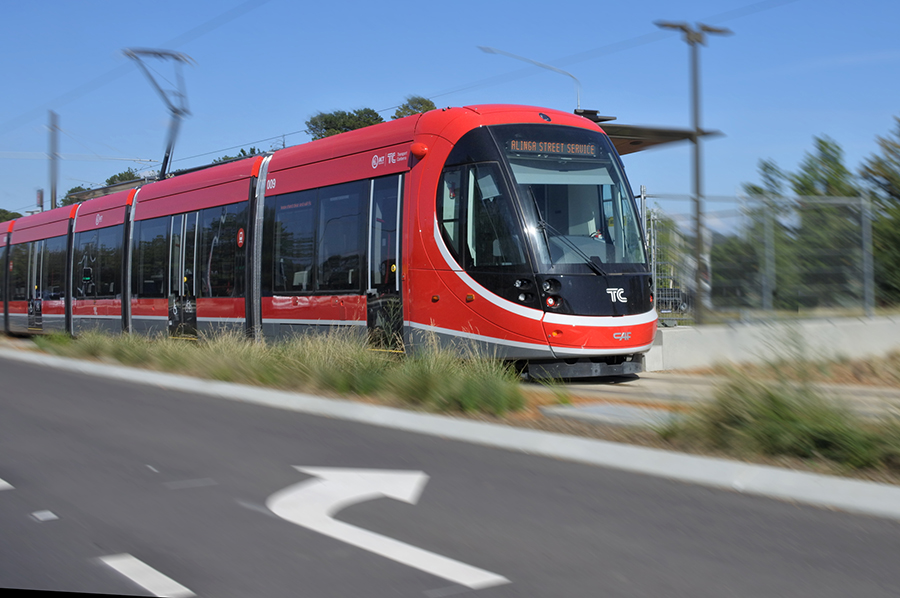
JON STANHOPE and KHALID AHMED reveal how ACT government policies hurt the 38,000 Canberrans, including 9000 children, living below the poverty line.
IT is simplistic, albeit convenient, for state and territory governments to view increasing income support, through the social security system, a Commonwealth Government responsibility, as the only answer to poverty.
This not only ignores the significant role and responsibility of state and territory governments in income redistribution, but incentivises them to not act to address poverty.
Broadly, the redistributive mechanisms available to state and territory governments are provision of services (and infrastructure), taxation and concessions.
For example, the provision of timely access to health care delivers a greater benefit to people on low-to-moderate incomes, who are unable to afford private health insurance or the costs involved in accessing care through the private market.
Conversely, as is increasingly the case in Canberra, a poor public health system results in inordinate costs for those who are least able to afford it, through an inability, for example, to fully engage in the employment market because of illness, or the cost of access to health care in the private market.
The policy choices and priorities set by state and territory governments can have profound impacts on poverty. The right choices when allocating funds – progressive and fair choices – can alleviate or prevent people experiencing poverty.
Conversely, choices that exacerbate entrenched structural poverty or fail to address it, or push people into poverty, albeit transiently, are bad choices, both morally and economically.
In assessing the ACT government’s record in this regard, an obvious example is the light rail project.
The direct and opportunity costs of the project have been broadly and publicly discussed as has the decision to prioritise light rail over the expansion of hospital bed capacity and health services and the provision of public housing. However, the distributional impacts of the project have received relatively less attention.
The light rail infrastructure and associated services are currently confined to a single corridor with the maximisation of property values in the corridor being a deliberately sought outcome of the project.
The development displaced around 11 per cent of all ACT public-housing tenants who were rehoused in areas with relatively poorer access to services.
‘The negative distributional impact of light rail is beyond dispute’
The proceeds of land sales, including all of the public housing stock along the route, were directed to the light rail project. Public housing stock has, as a result, suffered a major decline despite the creation of the euphemistically titled “Public Housing Renewal Program”, which was clearly and bizarrely designed to help finance light rail.
The bus network servicing the rest of Canberra was also scaled down. The negative distributional impact of light rail is clear and beyond dispute.
The taxation policy of the ACT government over the past decade provides a further vivid example of decisions that have had a disproportionate impact on poorer Canberrans.
Having committed, for example, to abolish land tax on rental properties, the government has actually increased the land tax rate that, in the main, will have been passed straight on to renters.
In principle, we support the taxation reform designed to abolish duty on conveyances. Unfortunately, the resultant revenue transfers introduced to general rates as a consequence of the decision to phase out stamp duty are regressive with little to no regard having been given to the distributional impacts.
In addition the taxation reform program has not been complemented by enhancement of the concessions regime.
Notably around a quarter of the recommendations of the taxation review panel were focused on the distributional impacts and they have largely been ignored. As a consequence, the value of concessions has in fact deteriorated in recent years.
A report from ACTCOSS in October estimated the poverty rate in the ACT as 9 per cent. It stated that with “over 38,000 Canberrans living below the poverty line, including 9000 children, it is beyond evident that the high cost of living in Canberra is unsustainable for those on low incomes.”
The report illustrates how, over the past five years, changes in the cost of living have hit Canberra’s low-income households the hardest.
In that period the costs of essential goods and services in the ACT have skyrocketed with increases to the cost of petrol of 34.9 per cent, electricity 28.1 per cent, gas 24 per cent, medical and hospital services 21.4 per cent, housing 19 per cent and education 17 per cent.”
Dr Emma Campbell, then CEO of ACTCOSS, said: “The cost-of-living crisis combined with pressures of rising inflation mean many Canberra households cannot afford the fundamentals of a healthy life such as housing, food, transport, health services, and energy.
“We hear stories of parents going without [food] so that they can feed their children or older people going without medical care so that they can keep their house warm.” That is, by definition, absolute poverty.
The ACT government publishes, each year, the hypothetical impact of the budget on a range of household types. Unsurprisingly, the government’s claims in successive budgets regarding the impact of its budgetary decisions are at odds with the ACTCOSS analysis, which is based on the lived experience of real families.
We strongly support calls from the community sector, including the Aboriginal and Torres Strait Islander community, for an independent inquiry into the depth of poverty in Canberra, including entrenched intergenerational poverty, and how best to respond to this blight on our city.
Jon Stanhope is a former chief minister of the ACT and Dr Khalid Ahmed a former senior ACT Treasury official.
Who can be trusted?
In a world of spin and confusion, there’s never been a more important time to support independent journalism in Canberra.
If you trust our work online and want to enforce the power of independent voices, I invite you to make a small contribution.
Every dollar of support is invested back into our journalism to help keep citynews.com.au strong and free.
Thank you,
Ian Meikle, editor



![Teacher Vanessa Jones has been living in Higgins since 2001, and while she loves the area, she says she is “fed up” with the neglectful ACT government.
The Higgins shops have been completely abandoned, says Vanessa, preventing the opportunity for residents to have a community-centred space to socialise.
They only received bins nine months ago, she says, and requests for a water station and repairs to the bus station have gone unanswered.
“It’s very, very slow,” says Vanessa.
“I asked for the zebra crossing on Fullagar [Crescent] to be repainted, and we had to wait about six or nine months.
“That’s just such a long time… we pay a lot of rates.”
Vanessa says assistance from the government only seems to go to communities with time-rich and assertive communities, leaving places such as Higgins, where the majority of households have both adults working full-time and English may not be the first language of the family, at an automatic disadvantage.
“If you’ve got two people working, paying a mortgage, raising two or three kids, they don’t have the time,” says Vanessa.
Vanessa says the lack of attention quieter places such as Higgins is receiving is starting to look a lot like favouritism.
Read the full article on our website citynews.com.au
#canberra #canberranews](https://citynews.com.au/wp-content/plugins/instagram-feed/img/placeholder.png)
Leave a Reply